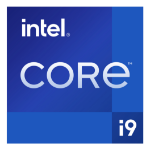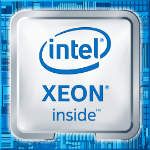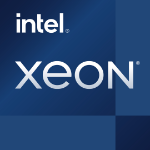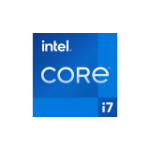We use cookies to make your experience better.
To comply with the new e-Privacy directive, you agree to the privacy policy and our use of cookies.
Intel
Intel Core i9-14900KF processor 36 MB Smart Cache Box
SKU
BX8071514900KF
In Stock
Boxed Intel Core i9 processor 14900KF (36M Cache, up to 6.00 GHz) FC-LGA16A

Next Day (UK) Delivery offered on stock items
| Processor | |
|---|---|
| Processor generation | Intel® Core™ i9 (14th gen) |
| Processor manufacturer | Intel |
| Cooler included | No |
| Processor codename | Raptor Lake |
| Memory bandwidth supported by processor (max) | 89.6 GB/s |
| Processor cache | 36 MB |
| Processor ARK ID | 236787 |
| Processor model | i9-14900KF |
| Processor threads | 32 |
| Processor operating modes | 64-bit |
| Processor boost frequency | 6 GHz |
| Stepping | B0 |
| Processor family | Intel® Core™ i9 |
| Processor cores | 24 |
| Processor socket | LGA 1700 |
| Processor cache type | Smart Cache |
| Package type | Box |
| Performance cores | 8 |
| Efficient cores | 16 |
| Performance-core boost frequency | 5.6 GHz |
| Performance-core base frequency | 3.2 GHz |
| Efficient-core boost frequency | 4.4 GHz |
| Efficient-core base frequency | 2.4 GHz |
| Processor base power | 125 W |
| Maximum turbo power | 253 W |
| Maximum number of DMI lanes | 8 |
| Memory | |
| Maximum internal memory supported by processor | 192 GB |
| Memory types supported by processor | DDR4-SDRAM, DDR5-SDRAM |
| Memory bandwidth supported by processor (max) | 89.6 GB/s |
| Memory channels | Dual-channel |
| Memory bandwidth (max) | 89.6 GB/s |
| Non-ECC | Yes |
| Graphics | |
| Discrete graphics card | No |
| On-board graphics card model | Not available |
| On-board graphics card | No |
| Discrete graphics card model | Not available |
| Technical details | |
| Thermal solution specification | PCG 2020A |
| Intel® Secure Key | Yes |
| Thermal Monitoring Technologies | Yes |
| Intel® Turbo Boost Technology | 2.0 |
| Intel® Hyper Threading Technology (Intel® HT Technology) | Yes |
| Intel® AES New Instructions (Intel® AES-NI) | Yes |
| Idle States | Yes |
| Execute Disable Bit | Yes |
| Enhanced Intel SpeedStep Technology | Yes |
| PCI Express slots version | 4.0, 5.0 |
| PCI Express configurations | 1x16+1x4, 2x8+1x4 |
| Supported instruction sets | AVX 2.0, SSE4.1, SSE4.2 |
| Scalability | 1S |
| L2 cache | 32768 KB |
| Intel VT-x with Extended Page Tables (EPT) | Yes |
| Embedded options available | No |
| CPU configuration (max) | 1 |
| Intel Virtualization Technology for Directed I/O (VT-d) | Yes |
| Intel 64 | Yes |
| Status | Launched |
| Market segment | Desktop |
| Launch date | Q4'23 |
| Intel Virtualization Technology (VT-x) | Yes |
| Processor cache type | Smart Cache |
| Features | |
| Maximum number of PCI Express lanes | 20 |
| Processor package size | 45 x 37.5 mm |
| Processor ARK ID | 236787 |
| Thermal solution specification | PCG 2020A |
| Thermal Monitoring Technologies | Yes |
| Idle States | Yes |
| Execute Disable Bit | Yes |
| PCI Express slots version | 4.0, 5.0 |
| PCI Express configurations | 1x16+1x4, 2x8+1x4 |
| Supported instruction sets | AVX 2.0, SSE4.1, SSE4.2 |
| Scalability | 1S |
| Embedded options available | No |
| CPU configuration (max) | 1 |
| Market segment | Desktop |
| Harmonized System (HS) code | 8542310001 |
| Export Control Classification Number (ECCN) | 5A992C |
| Commodity Classification Automated Tracking System (CCATS) | 740.17B1 |
| Use conditions | PC/Client/Tablet |
| Direct Media Interface (DMI) Revision | 4.0 |
| Processor special features | |
|---|---|
| Intel Virtualization Technology for Directed I/O (VT-d) | Yes |
| Intel 64 | Yes |
| Intel Turbo Boost Max Technology 3.0 | Yes |
| Intel® Speed Shift Technology | Yes |
| Intel® OS Guard | Yes |
| Intel® Secure Key | Yes |
| Intel® Turbo Boost Technology | 2.0 |
| Intel® Hyper Threading Technology (Intel® HT Technology) | Yes |
| Intel® AES New Instructions (Intel® AES-NI) | Yes |
| Enhanced Intel SpeedStep Technology | Yes |
| Intel VT-x with Extended Page Tables (EPT) | Yes |
| Intel Virtualization Technology (VT-x) | Yes |
| Intel® Boot Guard | Yes |
| Intel® Thermal Velocity Boost | Yes |
| Intel® Volume Management Device (VMD) | Yes |
| Intel® Deep Learning Boost (Intel® DL Boost) on CPU | Yes |
| Mode-based Execute Control (MBE) | Yes |
| Intel® Turbo Boost Max Technology 3.0 frequency | 5.8 GHz |
| Intel® Thermal Velocity Boost Frequency | 6 GHz |
| Intel® Control-flow Enforcement Technology (CET) | Yes |
| Intel® Thread Director | Yes |
| Intel® Gaussian & Neural Accelerator (Intel® GNA) 3.0 | Yes |
| Intel® Standard Manageability (ISM) | Yes |
| Intel® Adaptive Boost Technology | Yes |
| Operational conditions | |
| Tjunction | 100 °C |
| Packaging data | |
| Package type | Box |
| Logistics data | |
| Harmonized System (HS) code | 8542310001 |
| Weight & dimensions | |
| Processor package size | 45 x 37.5 mm |
| Other features | |
| Maximum internal memory | 192 GB |
| L2 cache | 32768 KB |
| CPU configuration (max) | 1 |
You may also be interested in
| Product |

Bestseller
Intel Core i9-14900KF processor 36 MB...
Login for pricing
|

Popular
Intel Xeon W-2225 processor 4.1 GHz 8....
Login for pricing
|
 Intel Xeon E-2386G processor 3.5 GHz 1...
Login for pricing
Intel Xeon E-2386G processor 3.5 GHz 1...
Login for pricing
|
 Intel Xeon E-2374G processor 3.7 GHz 8...
Login for pricing
Intel Xeon E-2374G processor 3.7 GHz 8...
Login for pricing
|

Hot Product
Intel Core i9-12900KS processor 30 MB...
Login for pricing
|

Recommended
Intel Core i7-11700T processor 1.4 GHz...
Login for pricing
|
|---|---|---|---|---|---|---|
| SKU |
BX8071514900KF
|
CD8069504394102
|
CM8070804494716
|
CM8070804495216
|
BX8071512900KS
|
CM8070804491314
|
| Manufacturer |
Intel
|
Intel
|
Intel
|
Intel
|
Intel
|
Intel
|
| Processor lithography |
N/A
|
up to 22nm
|
up to 22nm
|
up to 22nm
|
N/A
|
up to 22nm
|
| Processor family |
Intel Core i9
|
Intel Xeon W
|
Intel Xeon E
|
Intel Xeon E
|
Intel Core i9
|
Intel Core i7
|
| Processor socket |
LGA 1700
|
LGA 2066 (Socket R4)
|
LGA 1200 (Socket H5)
|
LGA 1200 (Socket H5)
|
LGA 1700
|
LGA 1200 (Socket H5)
|
| Processor cores |
24
|
4
|
6
|
4
|
16
|
8
|
| On-board graphics card |
N
|
N
|
Y
|
Y
|
Y
|
Y
|
| Discrete graphics card |
N
|
N
|
N
|
N
|
N
|
N
|
| Cooler included |
N
|
N
|
N
|
N
|
N
|
N
|
| Package type |
Box
|
Tray
|
Tray
|
Tray
|
Box
|
Tray
|

